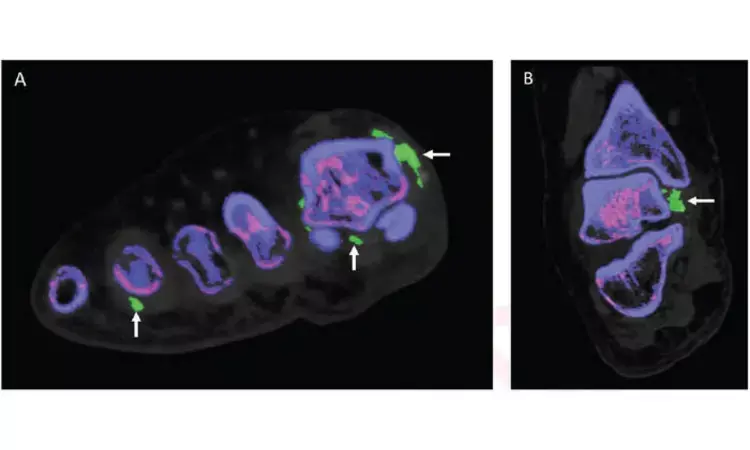- Home
- Medical news & Guidelines
- Anesthesiology
- Cardiology and CTVS
- Critical Care
- Dentistry
- Dermatology
- Diabetes and Endocrinology
- ENT
- Gastroenterology
- Medicine
- Nephrology
- Neurology
- Obstretics-Gynaecology
- Oncology
- Ophthalmology
- Orthopaedics
- Pediatrics-Neonatology
- Psychiatry
- Pulmonology
- Radiology
- Surgery
- Urology
- Laboratory Medicine
- Diet
- Nursing
- Paramedical
- Physiotherapy
- Health news
- Fact Check
- Bone Health Fact Check
- Brain Health Fact Check
- Cancer Related Fact Check
- Child Care Fact Check
- Dental and oral health fact check
- Diabetes and metabolic health fact check
- Diet and Nutrition Fact Check
- Eye and ENT Care Fact Check
- Fitness fact check
- Gut health fact check
- Heart health fact check
- Kidney health fact check
- Medical education fact check
- Men's health fact check
- Respiratory fact check
- Skin and hair care fact check
- Vaccine and Immunization fact check
- Women's health fact check
- AYUSH
- State News
- Andaman and Nicobar Islands
- Andhra Pradesh
- Arunachal Pradesh
- Assam
- Bihar
- Chandigarh
- Chattisgarh
- Dadra and Nagar Haveli
- Daman and Diu
- Delhi
- Goa
- Gujarat
- Haryana
- Himachal Pradesh
- Jammu & Kashmir
- Jharkhand
- Karnataka
- Kerala
- Ladakh
- Lakshadweep
- Madhya Pradesh
- Maharashtra
- Manipur
- Meghalaya
- Mizoram
- Nagaland
- Odisha
- Puducherry
- Punjab
- Rajasthan
- Sikkim
- Tamil Nadu
- Telangana
- Tripura
- Uttar Pradesh
- Uttrakhand
- West Bengal
- Medical Education
- Industry
Evolution of dual-energy CT in gout workup

Leesburg, VA - According to an article in ARRS' American Journal of Roentgenology (AJR), technological improvements, clinical practice changes, and growing experience among radiologists and referrers alike are contributing to the evolving role of dual-energy CT (DECT) in gout workup.
When comparing DECT examinations performed for gout in 2013 and 2019, the frequency of equivocal interpretations was significantly lower in 2019, "possibly related to interval technologic improvements," lead researcher Francis I. Baffour of Mayo Clinic in Rochester, MN concluded. "Negative examinations were less frequently followed by joint aspirations in 2019, possibly reflecting increasing clinical acceptance of the DECT results."
Baffour and colleagues' retrospective study included 100 consecutive adult patients who underwent DECT for gout evaluation in each of two periods, beginning in March 2013 and September 2019. DECT examinations in 2013 used a second-generation scanner (140 kV with 0.4 mm tin filter); in 2019, a third-generation scanner (150 kV with 0.6 mm tin filter) with improved spectral separation was used. Original DECT reports were classified as positive, negative, or equivocal for monosodium urate crystals indicative of gout. Joint aspirations occurring postexamination were recorded via medical record review.
Compared with the 2013 DECT examinations performed for suspected gout, those performed in 2019 had a significantly lower frequency of equivocal interpretations (16.0% vs. 33.0%, p<.001). Moreover, joint aspiration was significantly less likely to be performed after negative DECT interpretations in 2019 than in 2013 (2.1% vs. 17.4%, p=.02).
"The findings indicate an evolving role for DECT in the evaluation of gout following an institution's routine adoption of the technology for this purpose," the authors of this AJR article added.
https://www.ajronline.org/doi/10.2214/AJR.21.27139
Hina Zahid Joined Medical Dialogue in 2017 with a passion to work as a Reporter. She coordinates with various national and international journals and association and covers all the stories related to Medical guidelines, Medical Journals, rare medical surgeries as well as all the updates in the medical field. Email: editorial@medicaldialogues.in. Contact no. 011-43720751


